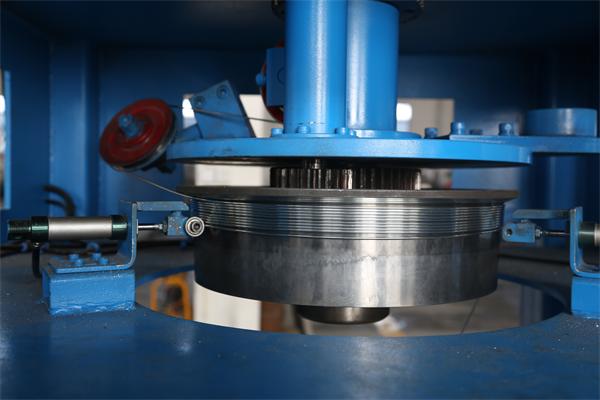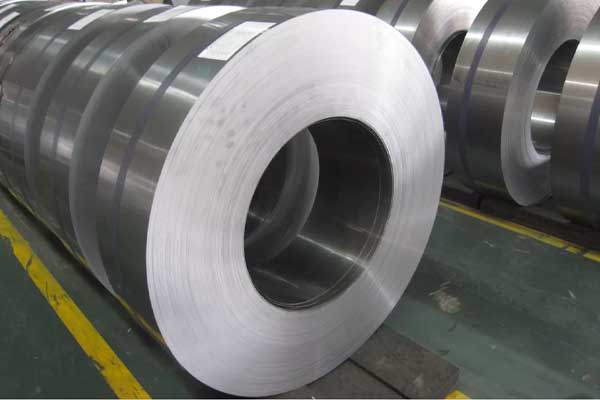Zinc alloy is an alloy composed of zinc and other elements. Often added alloying elements are aluminum, copper, magnesium, cadmium, lead, titanium and other low-temperature zinc alloys. Zinc alloy has low melting point, good fluidity, easy welding, brazing and plastic processing, corrosion resistance in the atmosphere, and the residual waste is easy to recycle and remelt; but the creep strength is low, and it is prone to dimensional changes caused by natural aging. Prepared by melting method, die-casting or pressure processing.
Table of Contents
Two manufacturing process of zinc alloy
According to the manufacturing process, it can be divided into cast zinc alloy and deformed zinc alloy. The main additive elements of zinc alloy are aluminum, copper and magnesium. Zinc alloys can be divided into deformation and casting zinc alloys according to the processing technology. Cast zinc alloy has good fluidity and corrosion resistance, and is suitable for die-casting instruments, automobile parts casings, etc.

Cast zinc alloy
Cast zinc alloy is an alloy formed by liquid casting of zinc alloy by melting. It is often used in the manufacture of parts and products, such as bicycle parts, auto parts, hardware, door and window accessories, etc. Cast zinc alloys are characterized by easy casting and relatively low production costs, but low strength, and are suitable for the manufacture of some parts that do not require high strength.
Wrought zinc alloy
Wrought zinc alloy is an alloy that deforms zinc alloy by extrusion, stretching, etc. It is often used to manufacture high-strength and light-weight parts and products, such as electronic equipment, automobile parts, construction materials, etc. The wrought zinc alloy is characterized by high strength, low density, and good corrosion resistance, and is suitable for products that require high strength, light weight, and corrosion resistance.
Top 6 Types of Zinc Alloy
- Zinc-copper alloy: An alloy made of a mixture of two elements, zinc and copper, usually with a high copper content. With excellent corrosion resistance, strength and conductivity, it is often used in the manufacture of electrical components, marine equipment, hardware accessories, etc.
- Zinc-copper-titanium alloy: an alloy made of a mixture of zinc, copper and titanium, with a high titanium content. With excellent corrosion resistance, strength and toughness, it is often used in the manufacture of ships and marine equipment, chemical equipment, aerospace components, etc.
- Zinc-aluminum alloy: An alloy made of a mixture of two elements, zinc and aluminum, often used in the manufacture of automobile and motorcycle parts, construction materials, aerospace components, etc. It has the characteristics of good corrosion resistance, strength and light weight.
- Zinc-aluminum-cadmium alloy: an alloy composed of zinc, aluminum and cadmium, which is often used in the manufacture of aerospace components, auto parts, etc. It has high strength, excellent corrosion resistance and toughness.
- Zinc-iron alloy: an alloy composed of zinc and iron, which is often used in the manufacture of auto parts, building materials, hardware accessories, etc. It has high strength, excellent corrosion resistance and toughness.
- Zinc-tin alloy: an alloy composed of zinc and tin, which is often used in the manufacture of hardware accessories, toys, cosmetic packaging, etc. Has excellent wear resistance, toughness and corrosion resistance.
Zinc-copper alloys
Zinc-copper alloys are alloys made of a mixture of two elements, zinc and copper, usually with a high copper content. Has excellent corrosion resistance, strength and electrical conductivity. Zinc-copper alloys are often used in the manufacture of electrical components, marine equipment, hardware accessories, etc. Due to the addition of copper, the zinc-copper alloy has good plasticity and strength, and also has good corrosion resistance, so it is also very effective in some corrosive environments. The higher the copper content of the zinc-copper alloy, the higher the strength and the better the corrosion resistance, but the plasticity and toughness will be reduced.
Features
- Good corrosion resistance: The presence of zinc in zinc-copper alloys can increase the corrosion resistance of the alloy, so it performs very well in corrosive environments.
- Good plasticity: Zinc-copper alloy has better plasticity and strength due to the addition of copper.
- Good conductivity: Due to the presence of copper, zinc-copper alloys have good conductivity and can be used to make some electrical components.
- Easy to process: Zinc-copper alloy can be cold-worked and hot-worked, and has good processability.
Advantage
- Good mechanical properties: Zinc-copper alloy has good strength, hardness and toughness, and has a high modulus of elasticity.
- Heat resistance: Zinc-copper alloy still has good heat resistance in high temperature environment.
- Good wear resistance: Zinc-copper alloy has high surface hardness and good wear resistance, and can be used to manufacture some wear-resistant parts.
Application
Manufacture of electrical components: The good conductivity and corrosion resistance of zinc-copper alloys make it widely used in the electrical field, such as sockets, terminal blocks, etc.
Manufacture of marine equipment: Zinc-copper alloy has good corrosion resistance and can be used to manufacture some equipment and parts used in marine environments, such as anchors and chains.
Manufacturing hardware accessories: Zinc-copper alloys can be made into some hardware accessories, such as door handles, handles, door locks, etc.
Manufacture of mechanical parts: Zinc-copper alloy has relatively good strength, hardness and toughness, and can be used to manufacture some mechanical parts, such as gears and bearings.
Zinc-copper-titanium alloy
Zinc-copper-titanium alloy is an alloy composed of zinc, copper and titanium. Usually, the content of zinc is between 10% and 40%, the content of copper is between 1% and 10%, and the content of titanium is between 0.1% and 1% %between. This alloy has good corrosion resistance, plasticity, strength and hardness, and can be used in the manufacture of electronic devices, auto parts, mechanical parts and construction materials. In addition, zinc-copper-titanium alloys also have good weldability and machinability, and are suitable for some processing and manufacturing processes.
Features
- Good corrosion resistance: Zinc-copper-titanium alloy has good corrosion resistance and can be used in acidic and alkaline environments.
- Good plasticity: Zinc-copper-titanium alloy has good plasticity and can be formed by cold working and hot working.
- Good strength and hardness: Zinc-copper-titanium alloy has high strength and hardness, and can be made into some parts that require high strength and hardness.
Application
- Manufacture of electronic devices: Zinc-copper-titanium alloy has good electrical conductivity and corrosion resistance, so it can be used to manufacture connecting parts of some electronic devices.
- Manufacture of auto parts: Zinc-copper-titanium alloy has good strength and hardness, and can be used to manufacture some auto parts, such as transmission parts, clutch parts, etc.
- Manufacture of mechanical parts: The strength and hardness of zinc-copper-titanium alloy can also make it used in the manufacture of some mechanical parts, such as gears, bearings, etc.
- Manufacture of building materials: Zinc-copper-titanium alloy can be used to make some building materials, such as aluminum alloy doors and windows, curtain walls, etc.
Zinc-aluminum alloy
Zinc-aluminum alloy is an alloy composed of zinc and aluminum. Generally, the content of zinc is about 90%, the content of aluminum is about 8%, and it also contains a small amount of copper, magnesium, iron and other elements. This alloy has good corrosion resistance, plasticity, strength and hardness, and can be used in the manufacture of automotive parts, construction materials, electronic devices and aerospace components, etc.
Advantage
- Good corrosion resistance: Zinc-aluminum alloy can maintain good corrosion resistance in humid, acidic and alkaline environments.
- Good plasticity: Zinc-aluminum alloy can be formed by pressure processing, extrusion and stretching.
- Good strength and hardness: Zinc-aluminum alloy has high strength and hardness, and can manufacture some parts that require high strength and hardness.
- Good weldability and machinability: Zinc-aluminum alloy can be easily welded, cut and processed.
Application
- Manufacture of auto parts: Zinc-aluminum alloy has high strength and hardness, and can be used to manufacture auto parts, such as crankcases, transmission parts, wheels, etc.
- Manufacture of building materials: Zinc-aluminum alloys can be used to manufacture some building materials, such as aluminum alloy doors and windows, curtain walls, roofs, etc.
- Manufacture of electronic devices: Zinc-aluminum alloy has good electrical conductivity and corrosion resistance, and can be used to manufacture connecting parts of some electronic devices.
- Manufacturing aerospace components: Zinc-aluminum alloys have high strength and corrosion resistance and can be used to manufacture some aerospace components.
Zinc-aluminum-cadmium alloy
Zinc-aluminum-cadmium alloy is an alloy composed of zinc, aluminum and cadmium, usually the content of aluminum is 5-10%, the content of zinc is 85-90%, and the content of cadmium is between 1-5%. Zinc-aluminum-cadmium alloy has high strength, hardness and corrosion resistance, and also has good plasticity and processability. This alloy is usually used to manufacture parts that require high strength and high corrosion resistance, such as aerospace components, automotive parts, mechanical parts, etc.
Advantage
- High strength and hardness: Zinc-aluminum-cadmium alloy has high strength and hardness, and can manufacture some parts that require high strength and hardness.
- Good corrosion resistance: Zinc-aluminum-cadmium alloy can maintain good corrosion resistance in humid, acidic and alkaline environments.
- Good plasticity and processability: Zinc-aluminum-cadmium alloy can be formed and processed by extrusion, stretching and pressure processing.
Application
- Manufacture of aerospace components: Zinc-aluminum-cadmium alloys have high strength and corrosion resistance, and can be used to manufacture some aerospace components, such as aircraft structures, engine parts, etc.
- Manufacture of auto parts: Zinc-aluminum-cadmium alloy has high strength and hardness, and can be used to manufacture auto parts, such as engine parts, wheels, crankcases, etc.
- Manufacture of mechanical parts: Zinc-aluminum-cadmium alloys can be used to manufacture some mechanical parts that require high strength and high corrosion resistance.
- Manufacture of electronic devices: Zinc-aluminum-cadmium alloy has good electrical conductivity and corrosion resistance, and can be used to manufacture connecting parts of some electronic devices.
Zinc-iron alloy
Zinc-iron alloy is an alloy composed of zinc and iron, usually the content of zinc is between 90-95%, and the content of iron is between 5-10%. Zinc-iron alloy has good corrosion resistance and plasticity, and is usually used to make some metal products, such as steel wire, screws, rivets, etc.
Advantage
- Good corrosion resistance: Zinc-iron alloy can maintain good corrosion resistance in humid, acidic and alkaline environments.
- Good plasticity: Zinc-iron alloys can be shaped and processed by extrusion, stretching and pressure processing.
Application
- Manufacture of metal products such as steel wires, screws, rivets: Zinc-iron alloys can be used to manufacture some metal products, such as steel wires, screws, rivets, etc. These products usually require better corrosion resistance.
- Manufacturing batteries: Zinc-iron alloys can be used to manufacture positive electrode materials for some batteries, such as dry batteries, alkaline batteries, etc.
- Manufacture of alloy materials: zinc-iron alloys can be used to manufacture some alloy materials, such as zinc-iron-aluminum alloys.
Zinc-tin alloy
Zinc-tin alloy is an alloy composed of zinc and tin, usually the content of zinc is between 90-99%, and the content of tin is between 1-10%. Zinc-tin alloy has good corrosion resistance and plasticity, and is usually used to manufacture some parts or products with special requirements.
Features
- Good corrosion resistance: Zinc-tin alloy can maintain good corrosion resistance in wet and acidic environments.
- Low melting point: Zinc-tin alloy has a low melting point and is easy to melt and cast.
- Good plasticity: Zinc-tin alloy can be shaped and processed by extrusion, stretching and pressure processing.
Application
- Manufacturing seals: Zinc-tin alloys are usually used to manufacture some seals, such as official seals, contract seals, etc.
- Manufacture of small parts: Zinc-tin alloys can be used to make some small parts, such as parts of automobiles, motorcycles, bicycles, etc.
- Manufacture of alloy materials: Zinc-tin alloys can be used to manufacture some alloy materials, such as zinc-tin-aluminum alloys.
